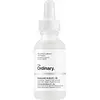What's inside
What's inside
 Key Ingredients
Key Ingredients

 Benefits
Benefits

 Concerns
Concerns

 Ingredients Side-by-side
Ingredients Side-by-side

Water
Skin ConditioningSodium Hyaluronate
HumectantPentylene Glycol
Skin ConditioningPropanediol
SolventSodium Hyaluronate Crosspolymer
HumectantPanthenol
Skin ConditioningAhnfeltia Concinna Extract
Skin ConditioningGlycerin
HumectantTrisodium Ethylenediamine Disuccinate
Citric Acid
BufferingIsoceteth-20
EmulsifyingEthoxydiglycol
HumectantEthylhexylglycerin
Skin ConditioningHexylene Glycol
Emulsifying1,2-Hexanediol
Skin ConditioningPhenoxyethanol
PreservativeCaprylyl Glycol
EmollientWater, Sodium Hyaluronate, Pentylene Glycol, Propanediol, Sodium Hyaluronate Crosspolymer, Panthenol, Ahnfeltia Concinna Extract, Glycerin, Trisodium Ethylenediamine Disuccinate, Citric Acid, Isoceteth-20, Ethoxydiglycol, Ethylhexylglycerin, Hexylene Glycol, 1,2-Hexanediol, Phenoxyethanol, Caprylyl Glycol
Water
Skin ConditioningCyclohexasiloxane
EmollientAlcohol Denat.
AntimicrobialGlycerin
HumectantButylene Glycol
HumectantDimethicone
EmollientZea Mays Germ Oil
EmollientPanthenol
Skin ConditioningTriethanolamine
BufferingAscorbyl Glucoside
AntioxidantGlyceryl Linoleate
EmollientPhenoxyethanol
PreservativePolyperfluoromethylisopropyl Ether
Skin ConditioningPolyacrylamide
Dimethiconol
EmollientGlyceryl Oleate
EmollientCarbomer
Emulsion StabilisingCetyl Alcohol
EmollientC13-14 Isoparaffin
EmollientParfum
MaskingAcrylates/C10-30 Alkyl Acrylate Crosspolymer
Emulsion StabilisingMethylparaben
PreservativeGlycine Soja Oil
EmollientCaffeine
Skin ConditioningTocopherol
AntioxidantHydrogenated Lecithin
EmulsifyingCastanea Sativa Seed Extract
Skin ConditioningBenzophenone-4
UV AbsorberMenthol
MaskingLimonene
PerfumingPEG-100 Stearate
Glyceryl Stearate
EmollientLaureth-7
EmulsifyingHydrolyzed Soy Protein
HumectantPotassium Cetyl Phosphate
EmulsifyingButylparaben
MaskingDisodium EDTA
Ethylparaben
PreservativeGlyceryl Linolenate
EmollientPropylparaben
PreservativeCitrus Aurantium Dulcis Juice
Skin ConditioningCitrus Limon Juice
Skin ConditioningLinalool
PerfumingCitral
PerfumingCI 42090
Cosmetic ColorantCI 14700
Cosmetic ColorantWater, Cyclohexasiloxane, Alcohol Denat., Glycerin, Butylene Glycol, Dimethicone, Zea Mays Germ Oil, Panthenol, Triethanolamine, Ascorbyl Glucoside, Glyceryl Linoleate, Phenoxyethanol, Polyperfluoromethylisopropyl Ether, Polyacrylamide, Dimethiconol, Glyceryl Oleate, Carbomer, Cetyl Alcohol, C13-14 Isoparaffin, Parfum, Acrylates/C10-30 Alkyl Acrylate Crosspolymer, Methylparaben, Glycine Soja Oil, Caffeine, Tocopherol, Hydrogenated Lecithin, Castanea Sativa Seed Extract, Benzophenone-4, Menthol, Limonene, PEG-100 Stearate, Glyceryl Stearate, Laureth-7, Hydrolyzed Soy Protein, Potassium Cetyl Phosphate, Butylparaben, Disodium EDTA, Ethylparaben, Glyceryl Linolenate, Propylparaben, Citrus Aurantium Dulcis Juice, Citrus Limon Juice, Linalool, Citral, CI 42090, CI 14700
 Reviews
Reviews

Alternatives
Ingredients Explained
These ingredients are found in both products.
Ingredients higher up in an ingredient list are typically present in a larger amount.
Glycerin is already naturally found in your skin. It helps moisturize and protect your skin.
A study from 2016 found glycerin to be more effective as a humectant than AHAs and hyaluronic acid.
As a humectant, it helps the skin stay hydrated by pulling moisture to your skin. The low molecular weight of glycerin allows it to pull moisture into the deeper layers of your skin.
Hydrated skin improves your skin barrier; Your skin barrier helps protect against irritants and bacteria.
Glycerin has also been found to have antimicrobial and antiviral properties. Due to these properties, glycerin is often used in wound and burn treatments.
In cosmetics, glycerin is usually derived from plants such as soybean or palm. However, it can also be sourced from animals, such as tallow or animal fat.
This ingredient is organic, colorless, odorless, and non-toxic.
Glycerin is the name for this ingredient in American English. British English uses Glycerol/Glycerine.
Learn more about GlycerinPanthenol is a common ingredient that helps hydrate and soothe the skin. It is found naturally in our skin and hair.
There are two forms of panthenol: D and L.
D-panthenol is also known as dexpanthenol. Most cosmetics use dexpanthenol or a mixture of D and L-panthenol.
Panthenol is famous due to its ability to go deeper into the skin's layers. Using this ingredient has numerous pros (and no cons):
Like hyaluronic acid, panthenol is a humectant. Humectants are able to bind and hold large amounts of water to keep skin hydrated.
This ingredient works well for wound healing. It works by increasing tissue in the wound and helps close open wounds.
Once oxidized, panthenol converts to pantothenic acid. Panthothenic acid is found in all living cells.
This ingredient is also referred to as pro-vitamin B5.
Learn more about PanthenolPhenoxyethanol is a preservative that has germicide, antimicrobial, and aromatic properties. Studies show that phenoxyethanol can prevent microbial growth. By itself, it has a scent that is similar to that of a rose.
It's often used in formulations along with Caprylyl Glycol to preserve the shelf life of products.
Water. It's the most common cosmetic ingredient of all. You'll usually see it at the top of ingredient lists, meaning that it makes up the largest part of the product.
So why is it so popular? Water most often acts as a solvent - this means that it helps dissolve other ingredients into the formulation.
You'll also recognize water as that liquid we all need to stay alive. If you see this, drink a glass of water. Stay hydrated!
Learn more about Water